A royal cloth
Originally, the use of kente was reserved for Asante royalty and limited to special social and sacred functions. Even as production has increased and kente has become more accessible to those outside the royal court, it continues to be associated with wealth, high social status, and cultural sophistication. Historians maintain that kente cloth grew out of various weaving traditions that existed in West Africa prior to the formation of the Asante Kingdom. These techniques were appropriated through vast trade networks, as were materials such as French and Italian silk, which became increasingly desired in the 18th century and were combined with cotton and wool to make kente.
Weaving kente
Kente is woven on a horizontal strip loom, which produces a narrow band of cloth about four inches wide. Several of these strips are carefully arranged and hand-sewn together to create a cloth of the desired size. Most kente weavers are men.

Weaving involves the crossing of a row of parallel threads called the warp (threads running vertically) with another row called the weft (threads running horizontally). A horizontal loom, constructed with wood, consists of a set of two, four or six heddles (loops for holding thread), which are used for separating and guiding the warp threads. These are attached to treadles (foot pedals) with pulleys that have spools of thread inserted in them. The pulleys can be used to move the warp threads apart. As the weaver divides the warp threads, he uses a shuttle (a small wooden device carrying a bobbin, or small spool of thread) to insert the weft threads between them. These various parts of the loom, like the motifs in the cloth, all have symbolic significance and are accorded a great deal of respect.


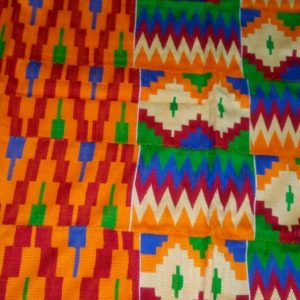
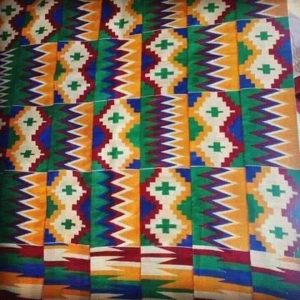
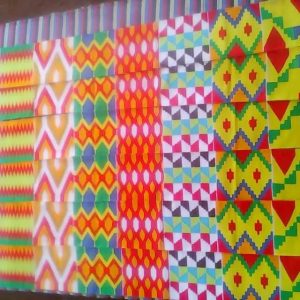
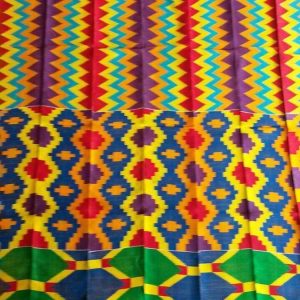
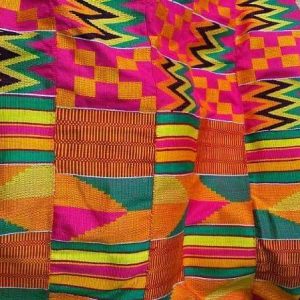

– Ranate
Radiant Kente: Woven Art for Women is a total must-have! The vibrant colors and intricate designs are absolutely stunning. This book beautifully showcases the artistry and cultural significance of kente cloth, specifically its empowering connection to women. A truly inspiring read for anyone interested in fashion, textiles, or African art. Get your copy, you won’t regret it!
– Nola
Totally agree with Ranate! This book is gorgeous. Pictures are amazing, and the stories about kente and women are so cool. Definitely a good read!